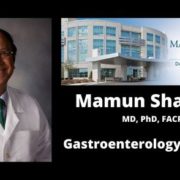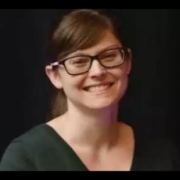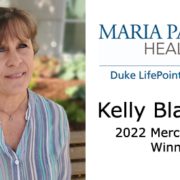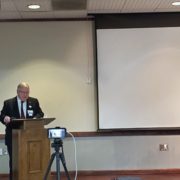Maria Parham Health was the site Thursday morning for a solemn ceremony to remember all the members of the military who have given their lives in service to the country and to hear read aloud the 77 names of members from the local area who died serving their country.
CEO Bert Beard welcomed those in attendance to begin the “No Greater Love” observance, in which various members of the hospital staff had roles. Pastor Frank Sossamon led opening and closing prayers and members of hospital security presented the colors. Travis Thompson, director of imaging and wound care, led the group in the Pledge of Allegiance and Hope Schuler, daughter of MPH employee Lisa VanFleet, sang the National Anthem.
Rickey Padgett, with N.C. Detective Agency and also a member of the hospital staff, shared remarks and reflected on what the Memorial Day holiday means. It’s a time to remember all men and women in uniform, Padgett told the gathering but especially those who sacrificed their lives.
“They paid the price so that we could be here today,” he said. The families of the fallen continue to grieve, so it is also important for us to remember, Padgett said, “and to celebrate the freedoms that we have and the life we are given…to remain grateful and never forget.”
Padgett said he had been friends with one particular man who also was a veteran of World War II. This friend had told Padgett that, upon his death, Padgett would receive something from him. That “something” turned out to be a long, typewritten letter – from a real typewriter, not a word processor – that recounted some of what the man had encountered as a U.S. infantryman in the European theater.
Padgett read excerpts from this letter, which chronicled snowy, muddy conditions on and near battlefields in France and the grim task of recovering soldiers’ bodies strewn along the countryside.
“’I could hear the Germans digging foxholes’” in the snowy landscape not far from where this soldier and his unit were camped, the letter read. “’We had to pick up dead bodies, American and German,’” Padgett continued.
Although he said he has met and talked with many veterans of World War II, Padgett said this letter helped answer a question he had often wondered about: How do the bodies of fallen soldiers make it back home, where they can be laid to rest and receive a proper burial?
Soldiers like the one who wrote the letter and sent it to Padgett, that’s how.
Whether it was from a battlefield in Europe or the desert-like conditions in Afghanistan, members of the military take care of each other until the end.
Padgett said he asked this friend what he did in the war. “He said, ‘I was a soldier,’” Padgett recalled.
A simple answer with layers and layers of meaning.
Listen to the recorded ceremony in its entirety just below.
Click Play









